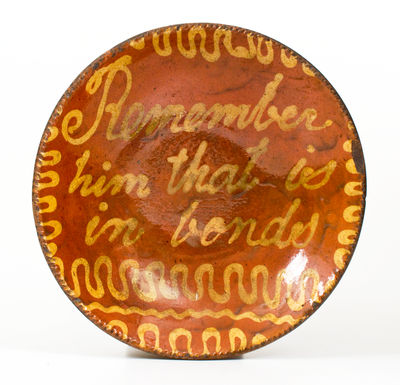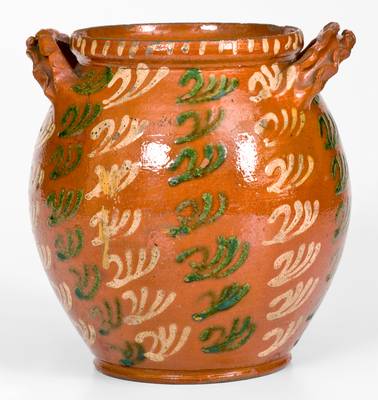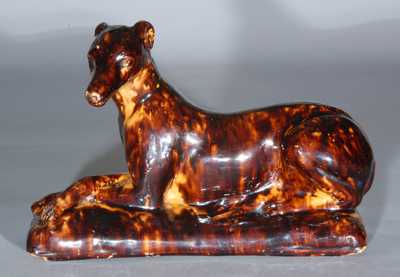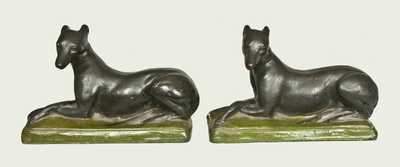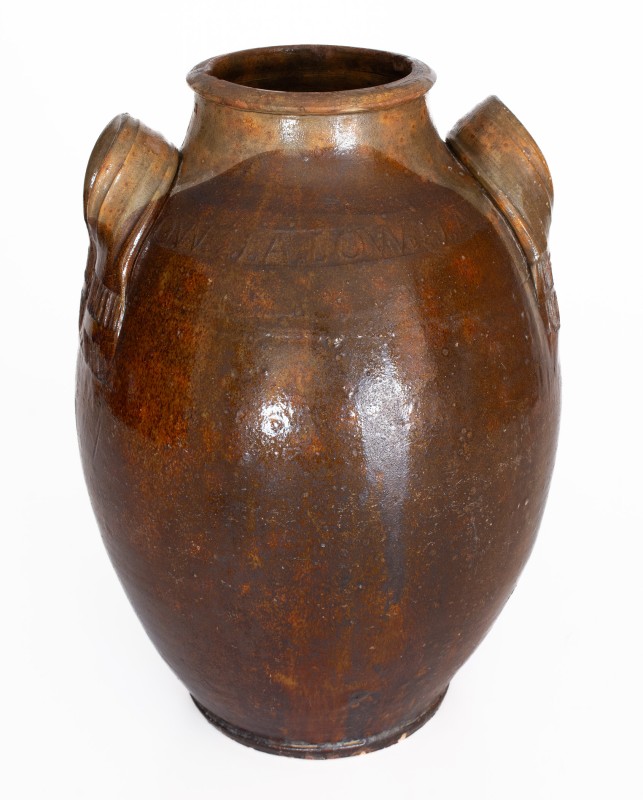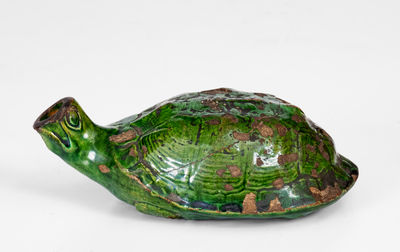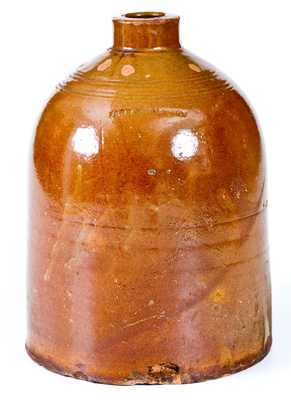Exceptional and Important Glazed Redware Tea Canister with Profuse Yellow Slip Decoration, American or English, possibly Charlestown, MA, circa 1725-1800, cylindrical form with tapered sides, heavily-rounded shoulder, and short, narrow spout, the surface lavishly-decorated with vertical bands of yellow slip joined by diagonal stripes, all under a clear lead glaze. The tea canister is among the rarest and most distinctive early American redware forms, representative of a time when tea was one of the most essential dry goods. In 1768, American colonists consumed more than two million pounds of it. The tea canister form, when found, is almost solely relegated to 18th century production. Most were made in Eastern Pennsylvania and feature sgraffito decoration. Among these is a highly-important example by Joseph Smith of Bucks County, PA, dated 1769, in the collection of the Metropolitan Museum of Art in Manhattan, NY. A second example, dated 1794, can be found in the collection of Winterthur in Wilmington, DE. A third example, sold through Crocker Farm in 2016, was made in Kentucky by potter, Philip Anthony, and bears a 1795 date. Three other examples, all of Pennsylvania manufacture, including one dated "1793" and another with a surprisingly-late "1846" date, sold in the important Sotheby's auction, "Visual Grace: Important American Folk Art from Ralph O. Esmerian", January 25, 2014. The bold yellow slip brushwork on the canister to be auctioned corroborates an 18th century origin. However, its slip design work indicates craftsmanship outside of Pennsylvania's potting traditions, from which a good number of 18th century shards and intact examples have survived. Instead, its decoration suggests an English origin or possible manufacture by one of several 18th century potters from Charlestown, Massachusetts. Information provided by the Charlestown Historical Society indicates that the town was responsible for most of the redware production in New England prior to the American Revolution, and that over forty potters operated within this complex during the first three quarters of the 18th century. Archaeological excavations have revealed that, along with producing a variety of simple, lead-glazed articles, the potters of Charlestown also manufactured pieces adorned with generously-applied yellow slip, in a manner loosely-related to English slipware of the period. Commonalities can be found between this flask and other objects excavated from Charlestown's pottery sites. Significant in its form, age, and high decorative appeal, this work may also carry importance in its possible origin as one of a few intact Charlestown redware vessels known. Provenance: A fresh-to-the-market example, which recently surfaced in a New York State collection. This canister survives in remarkable, excellent condition with a few base chips and minor wear. H 6 3/4".












